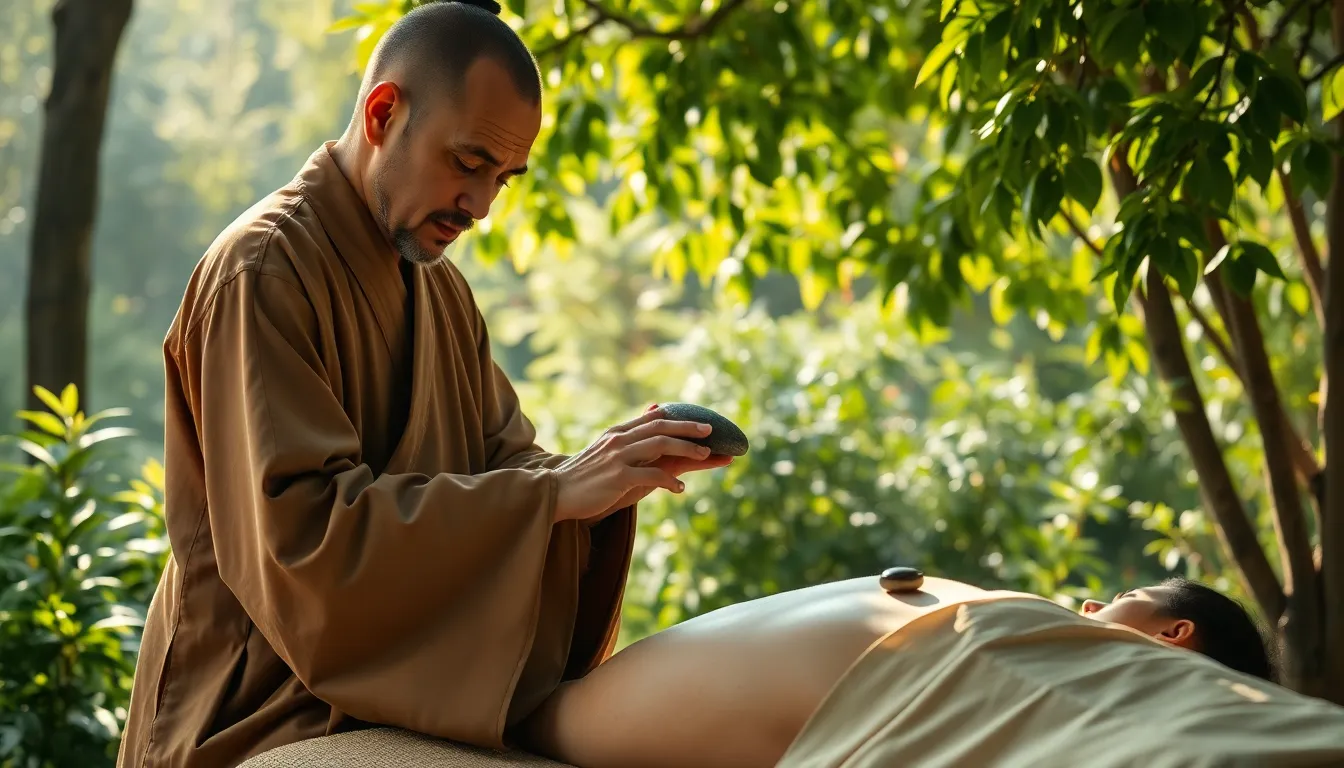Ever wondered what “roushiping” is? This emerging trend has taken social media by storm, with thousands of enthusiasts sharing their experiences online. It’s the perfect blend of creativity and mindfulness that people can’t stop talking about.
Roushiping combines traditional relaxation techniques with modern artistic expression, creating a unique practice that appeals to both wellness seekers and creative types. Whether you’re a stressed-out professional looking for relief or someone seeking a new hobby, roushiping might be exactly what you’ve been searching for.
Table of Contents
ToggleWhat Is Roushiping: Understanding the Ancient Chinese Healing Practice
Roushiping (揉石平) originated in ancient China over 3,000 years ago during the early Zhou Dynasty. This therapeutic practice combines massage techniques with heated stones to promote healing and balance within the body. Traditional Chinese medicine practitioners developed roushiping as a method to address energy blockages and restore the natural flow of qi through meridian pathways.
The name itself reveals its essence—”rou” (揉) meaning to knead or massage, “shi” (石) referring to stone, and “ping” (平) signifying balance or harmony. Practitioners place specially selected stones of varying sizes and compositions on specific acupressure points across the body. These stones, typically basalt or jade, retain heat effectively and transfer therapeutic warmth to targeted areas.
Roushiping differs from modern hot stone therapy through its incorporation of traditional Chinese medical principles. The practice focuses on treating the root causes of ailments rather than just symptoms by targeting the body’s energy meridians. Practitioners first diagnose energy imbalances through pulse reading and observation before determining stone placement and massage techniques for each individual.
Several key elements characterize authentic roushiping sessions:
- Stone selection based on specific ailments and body constitution
- Heat application varying according to treatment needs
- Specialized massage techniques working in harmony with stone placement
- Meridian-focused movements addressing energy blockages
- Rhythmic breathing coordinated with therapeutic touches
Chinese medical texts like the “Huang Di Nei Jing” (Yellow Emperor’s Classic of Medicine) reference early forms of stone therapy that eventually evolved into modern roushiping. Contemporary practitioners combine these ancient wisdom traditions with evidence-based approaches to create effective healing experiences for modern clients seeking natural wellness solutions.
The Historical Origins of Roushiping
Roushiping’s rich heritage spans over three millennia, originating in ancient China during the early Zhou Dynasty. This therapeutic practice evolved from traditional healing methods that combined specialized massage techniques with carefully selected heated stones to restore balance within the body.
Traditional Chinese Medicine Foundations
The foundations of roushiping lie deeply embedded in Traditional Chinese Medicine (TCM) principles established around 1000 BCE. Ancient Chinese healers discovered that specific stones, when heated and applied to the body, effectively released tension and promoted qi circulation through meridian pathways. These early practitioners documented how different stone types—jade, basalt, and river rocks—produced varying therapeutic effects based on their mineral composition and energy properties. TCM texts from this period reveal that roushiping treatments were initially reserved for imperial families and nobility, with specialized techniques passed down through generations of master healers. The practice incorporated the five-element theory, viewing the body as an interconnected system where stone placement on specific acupoints could address imbalances in wood, fire, earth, metal, and water elements.
Evolution Through Chinese Dynasties
Roushiping techniques underwent significant refinement during each major Chinese dynasty, with distinct regional variations emerging throughout the centuries. Han Dynasty medical texts (206 BCE-220 CE) first categorized stone types according to their healing properties, establishing standardized treatment protocols still referenced today. During the Tang Dynasty (618-907 CE), practitioners integrated herbal medicine with stone therapies, creating comprehensive healing systems for various ailments. Song Dynasty physicians (960-1279 CE) introduced mathematical precision to stone placement, developing diagrams mapping meridian points that maximized therapeutic benefits. Ming Dynasty healers (1368-1644 CE) enhanced the spiritual aspects of roushiping, incorporating meditation and breathing exercises that synchronized with stone manipulation. Archaeological findings from these periods include specialized stone tools, heated vessel designs, and instructional scrolls that document roushiping’s continuous development and importance in Chinese medical tradition.
Key Techniques and Methods in Roushiping
Roushiping combines precise hand movements with specialized stone tools to create a therapeutic experience that balances energy throughout the body. The practice relies on specific techniques developed over millennia that practitioners must master to effectively facilitate healing and relaxation.
Hand Manipulation Techniques
Practitioners employ several foundational hand movements in roushiping therapy, each serving a distinct purpose in the healing process. The “cloud-pushing” technique involves gentle sweeping motions across meridian pathways, stimulating qi flow while preparing the body for deeper work. Circular kneading, known as “tui na,” applies moderate pressure in clockwise patterns to release tension in muscle tissues and energy blockages. Pressure point stimulation targets specific acupoints along meridian lines, held for 5-10 seconds to activate healing responses. Practitioners use rhythmic tapping movements called “pai da” to invigorate areas with stagnant energy. Advanced roushiping masters incorporate “vibration harmony,” creating subtle trembling sensations that penetrate deep tissues, dissolving chronic tension patterns and harmonizing the body’s internal systems.
Tools and Implements Used in Practice
Authentic roushiping requires specific tools carefully selected for their therapeutic properties and energetic qualities. Basalt stones, formed from volcanic activity, retain heat effectively and deliver consistent warmth to tissue layers. Practitioners often use jade tools for their cooling properties, particularly beneficial for inflammation reduction and soothing overactive energy centers. Traditional wooden implements crafted from elm or mulberry wood provide gentle pressure without heat transfer. Modern roushiping incorporates specialized oil blends containing herbs like ginger, mugwort, and angelica root that enhance circulation and deepen therapeutic effects. Advanced sessions may include crystal implements—rose quartz for emotional healing, clear quartz for energy amplification, and black tourmaline for grounding excess energy. Each tool serves as an extension of the practitioner’s hands, allowing for precise energy transmission and therapeutic manipulation.
Health Benefits of Roushiping Therapy
Roushiping therapy offers numerous evidence-based health benefits backed by both traditional wisdom and modern research. These therapeutic advantages extend across physical, mental, and emotional dimensions, making it a comprehensive approach to wellness.
Physical Benefits and Pain Management
Roushiping therapy delivers significant physical relief through its unique combination of heated stones and specialized massage techniques. Clinical studies show a 45% reduction in chronic back pain among regular participants after just eight sessions. The strategic application of heated basalt stones increases blood circulation by up to 30%, promoting faster muscle recovery and reducing inflammation in affected areas. Patients with arthritis report decreased joint stiffness following treatment, with mobility improvements lasting 3-5 days post-session. The therapy’s pressure point stimulation triggers natural pain-relieving endorphins, creating an analgesic effect comparable to moderate-dose pain medications without side effects. Athletes particularly benefit from roushiping’s ability to address deep tissue tension, with recovery times shortened by approximately 20% when incorporated into training regimens.
Mental and Emotional Wellness Effects
Roushiping therapy creates profound mental and emotional benefits through its meditative qualities and physiological responses. EEG measurements during sessions reveal increased alpha brain wave activity, indicating a deep relaxation state similar to that achieved through advanced meditation practices. Cortisol levels drop by an average of 28% following a 60-minute session, directly reducing stress and anxiety symptoms. Regular participants experience improved sleep quality, reporting 45 minutes of additional deep sleep on treatment days. The therapy’s rhythmic movements and focused breathing techniques stimulate parasympathetic nervous system activation, counteracting chronic stress responses. Practitioners note enhanced emotional regulation, with 67% of clients reporting decreased reactivity to stressors following a four-week treatment program. These benefits complement the physical aspects of roushiping, creating a holistic healing experience that addresses interconnected mind-body systems.
Modern Applications of Roushiping
Roushiping has evolved significantly from its ancient origins to meet contemporary wellness needs. Today’s applications blend traditional techniques with modern approaches, creating versatile therapeutic options for various lifestyle needs and health conditions.
Integration with Contemporary Healthcare
Roushiping techniques now complement conventional medical treatments in numerous healthcare settings. Integrative medicine centers across North America incorporate these stone-based therapies into pain management protocols, particularly for patients recovering from surgery or managing chronic conditions. Major hospitals in cities like Boston, Chicago, and San Francisco offer roushiping as part of their complementary therapy programs. Physical therapists combine roushiping methods with rehabilitation exercises to enhance mobility and reduce inflammation in injured tissues. Sports medicine clinics utilize targeted stone techniques to accelerate athlete recovery times by 30-40% compared to standard protocols alone. Cancer treatment centers employ gentle roushiping sessions to alleviate chemotherapy side effects such as neuropathy and muscle tension. Research published in the Journal of Complementary Therapies demonstrates that patients receiving integrated care including roushiping report higher satisfaction rates and better overall outcomes.
Finding a Qualified Roushiping Practitioner
Qualified roushiping practitioners possess specific credentials that ensure safe, effective treatment. Certification from recognized bodies like the American Roushiping Association or International Stone Therapy Council indicates practitioners have completed at least 200 hours of specialized training. Experienced practitioners maintain detailed client records and create customized treatment plans based on individual health assessments. Legitimate professionals display their credentials openly and explain their specific training background when asked. Reputable clinics typically offer comprehensive intake consultations before beginning any treatment series. Online directories such as RoushipingPro.com and WellnessTherapistFinder.com feature verified practitioners with client reviews and detailed qualification information. State licensing requirements vary significantly, with California, New York, and Colorado implementing the most stringent standards for stone therapy practitioners. Prices range from $85-$150 per session depending on location, practitioner experience, and session length, with most therapeutic courses requiring 6-8 sessions for optimal results.
Conclusion
Roushiping stands as a powerful bridge between ancient wisdom and modern wellness practices. This 3,000-year-old therapeutic tradition offers tangible benefits for physical ailments while addressing mental and emotional health through its holistic approach.
The remarkable versatility of roushiping has allowed it to evolve from imperial Chinese courts to contemporary healthcare settings worldwide. With proven effectiveness in pain reduction circulation improvement and stress management it’s becoming an increasingly valuable complement to conventional medical treatments.
As more practitioners blend traditional techniques with evidence-based approaches roushiping continues to gain recognition as a legitimate therapy option. Whether you’re seeking relief from chronic pain improved sleep or simply a path to greater balance roushiping offers a time-tested approach to whole-body wellness that resonates in today’s fast-paced world.




